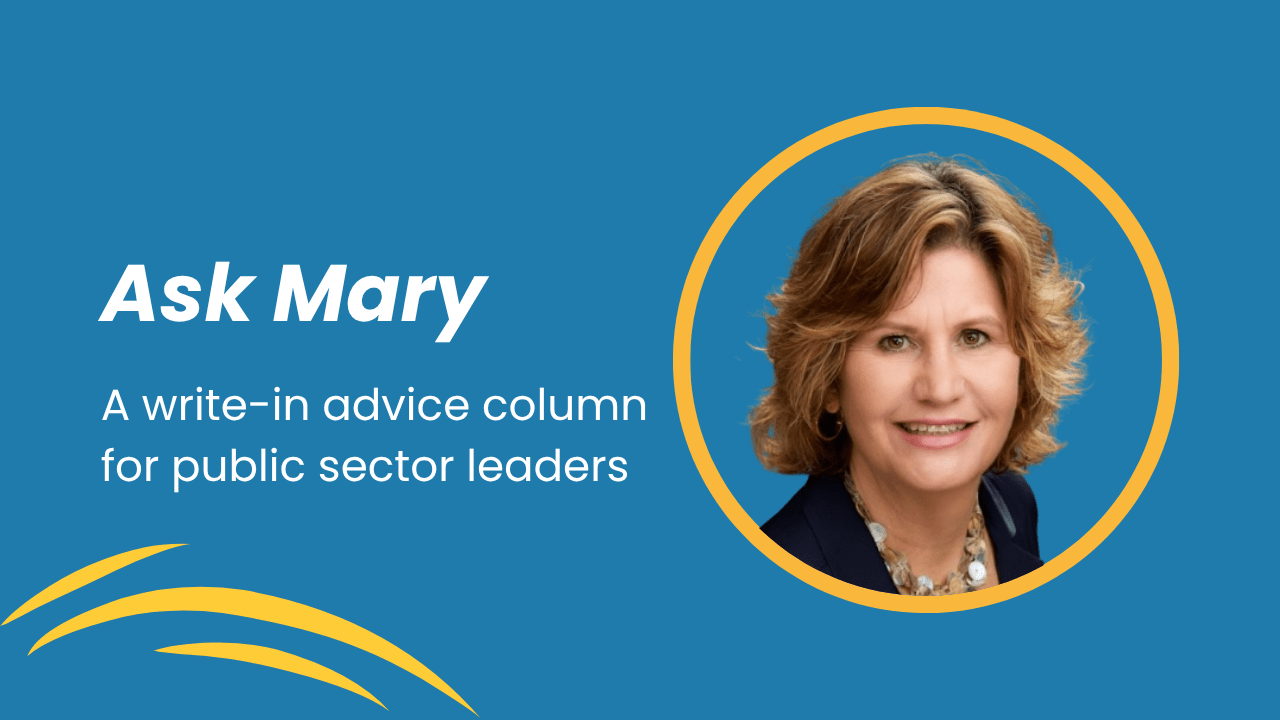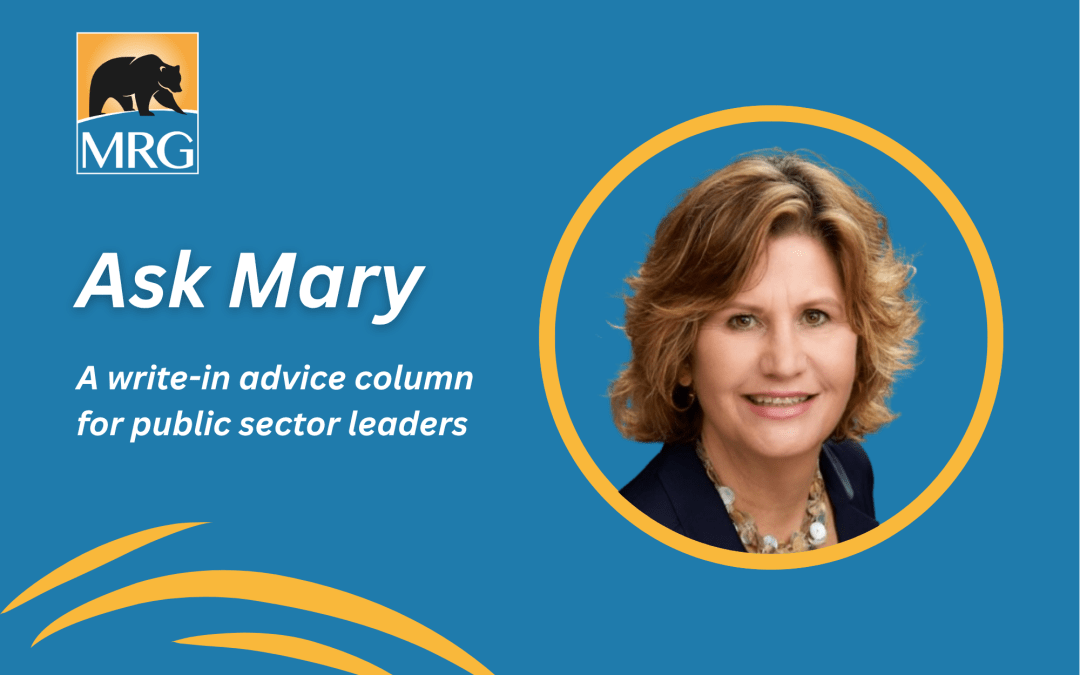
Welcome to Ask Mary, an advice column dedicated to helping public sector leaders address common issues and challenges with grace, humility and wit.
In this column, MRG founding partner and CEO Mary Egan offers her unique perspective and wisdom honed over two decades of helping public agencies thrive.
Dear Mary,
I have been in my first managerial role at a public agency for a little over a year. While it has been an adjustment, my organization provides great training and resources that have helped me to build my skills and understand my team better.
There’s one thing, however, that is not covered in the trainings: I have three reports, and two of them do not get along at all. They snip at each other in meetings and drop passive-aggressive comments. Nothing outright hostile, but if they were my kids I’d tell them to knock it off. Their disagreement precedes my joining the organization and frankly I don’t care to know what happened with them, it’s not my business. But the atmosphere in our department is unhealthy and I can tell it’s wearing on my other direct report, who has to listen to them complain about each other all day.
Recently I issued a memo to the team reminding them of proper workplace conduct and etiquette. The complaining stopped for about a week, then picked right up again when they each accused the other of whining to me.
How do I put a stop to this?
Sincerely,
Manager In The Middle
*
One of the most challenging aspects of being a first-time manager is helping employees manage their conflicts. That can be really frustrating, especially when it gets in the way of team goals.
The piece that’s most concerning to me is the “unhealthy atmosphere” that this conflict has created on your team. That unhealthy atmosphere plants the seeds for a formal workplace dispute to emerge. Sooner or later, you’ll have to deal with the conflict through a formal performance management process. I often speak to clients who observed interpersonal conflicts on their team but took a wishful-thinking approach to the problem, hoping it would just go away. But more often than not, the conflict spirals into a much more disruptive challenge. Unhappy people don’t always leave on their own accord…even worse, sometimes they stay.
You’ve done some good things to address this issue. You’ve recognized that this conflict is impeding team goals. You’ve noted that your other employee is uncomfortable with the conflict. Presumably in your memo you outlined your expectations for your team in clear terms. These are all good steps forward.
I agree though that you may have made the conflict more challenging to resolve by waiting too long to address a known issue, and you used a team-wide memo to try to correct your team’s behavior. When you are in a people management role, conflict in your team is always your business. You don’t have the luxury of ignoring a negative work atmosphere. You have to be thoughtful about the situation and your response.
Personally, I tend to avoid sending memos to address these sorts of interpersonal conflicts. This approach can make people feel defensive and doesn’t provide a way to resolve underlying issues. A lot of the time the offending party thinks that memo is addressed to someone else and misses that the memo is about their behavior.
Instead of a broad-brush approach, I prefer to bring the parties together in a quasi-mediation format. In this meeting we try to address the core of the issue, identify assumptions or preconceptions, and restore communication. This will usually take more than one meeting, since the first meeting may include deflection and blame games. In your first meeting, focus on what’s not working and the stated expectations you have for your team. Then, reconvene within a week or so to discuss what commitments your employees are willing to make to improve the situation.
A “relationship contract” or similar document can serve as an agreement about how all parties will move forward. This can be as simple as “We’re going to greet each other daily” or “We’re going to share work that gets signed by both parties”. That kind of agreement can encourage development versus defensiveness. And it also gives a record to reference if things continue to go downhill.
I prepare for these conversations by making sure I have all the facts available to me, and by being very clear on what I want to get out of the conversation. Reaching out to your HR team for support or working with a professional mediator are also ways to prepare yourself to resolve this conflict.
But make no mistake: This problem won’t go away on its own. Taking action to address the conflict now could save you from a catastrophic blowup later on.
Sincerely,
Mary Egan
Mary’s Pick: Crucial Conversations: Tools for Talking When Stakes Are High by Patterson, Grenny, McMillan & Switzler. This book is an anchor tool for new managers that helps you through how to handle performance conversations, bullying, disruptive circumstances, conflict-laden meetings and more.

